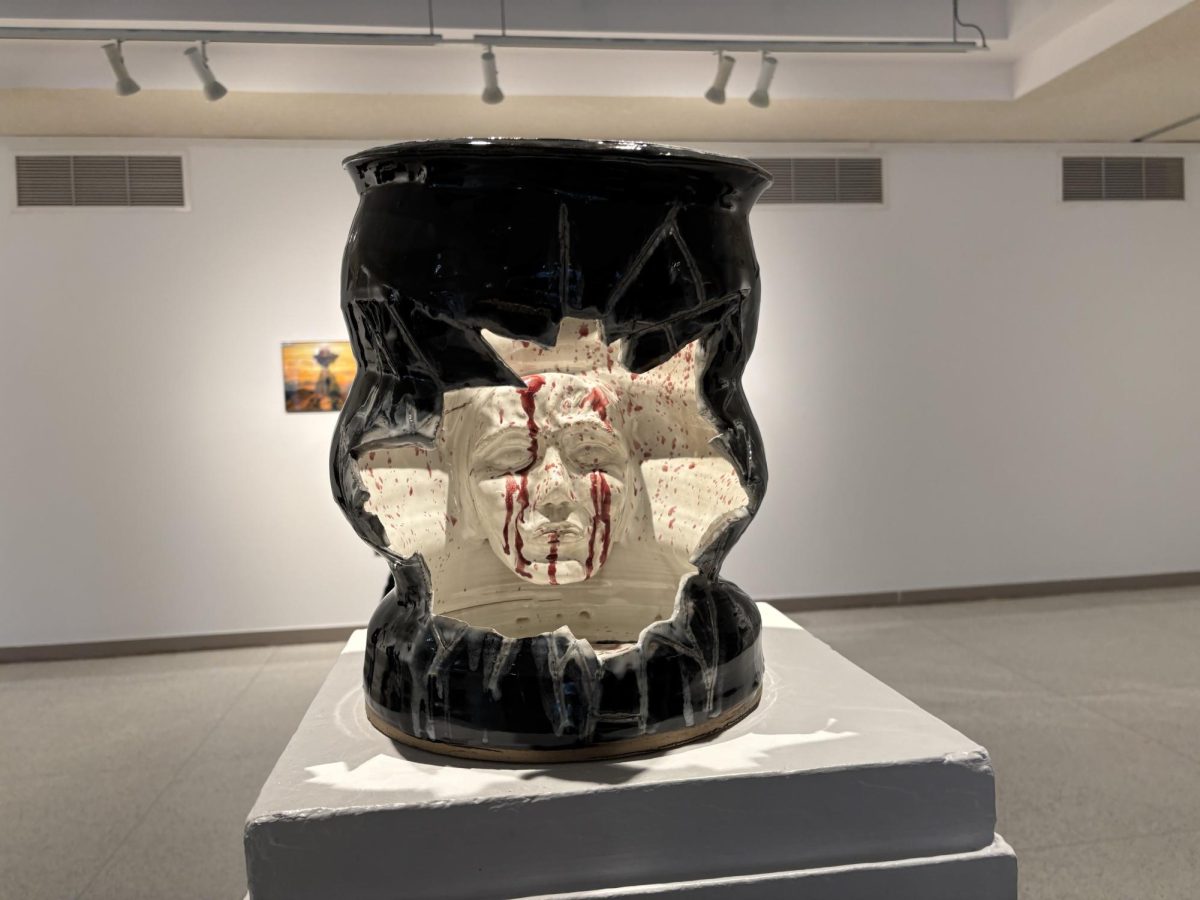She calls it “eating cushion.” It might sound like drug slang you learned in middle school health class, but Adele, from TLC’s “My Strange Addiction,” means it literally.
Each day, Adele unzips the cover from one of her couch cushions, where craters pock the foam underneath. Adele pinches off bite-size pieces off the cushion, tucking them into her purse for the day ahead. On her drive to work, she absent-mindedly gorges herself.
She judges cushion like most people judge wine. The yellow foam has a stronger taste, she says, and it feels better in your mouth. She would know: she has gone through seven couches, two chairs and 200 pounds of cushion since she began eating it at the age of ten.
Crystal slides her back down the bathroom wall, her eyes closed in rapture.
A pre-ripped tank top clings to her emaciated body as she runs a wrinkled finger across her gums. Her addiction is eating Comet cleanser: the pale, powdered detergent usually hidden in a forest-green can under a kitchen sink.
She mixes it into a paste under the bathroom faucet, and then swallows it soggy off her pointer finger. She likes the texture and she craves the taste.
Crystal, now in her fifties, has been addicted to Comet cleanser since she was twelve.
Later, she confides her addiction to her teenage daughter on the porch swing. Her daughter, laughing weakly, reads her the label.
“’Harmful if swallowed… do not ingest.’ They don’t want this anywhere inside of you,” she says.
Crystal looks up from lapping up a pile of cleanser in her hand with a look of mock surprise.
Trying to explain her compulsion, she waxes poetic that perhaps her love of wolfing Comet is a stroke of subtle self-destruction.
What a bewildering world we share.
“My Strange Addiction” airs on TLC on Wednesdays at 9 p.m.
The formula runs as such: a person confesses some strange addiction in a testimonial.
She then confides in a family member or close friend. Our protagonist then goes to the psychiatrist, who offers sympathy and simple coping mechanisms, then outlines in no uncertain terms how disgusting and dangerous this addiction is. Pensive and guilty, our tragic hero returns home, generally to relapse. The credits roll, and once the shock wears off, we feel a little sick.
This sort of stuff is the bread and butter of a nation of depressives like us: sad, sappy suckers who breathe heavy sighs and feel our strongest feelings in the bottoms of our guts, often with side effects of nausea.
The pacing is slow, the music is quiet and nothing is all that demanding.
After all, it isn’t too difficult to condemn someone for eating couch cushions.
I watched six episodes in a row of “My Strange Addiction”, unable to tear myself away every time a teaser for the next episode came on.
The show induces a strange craving in its viewers: a craving for the safe disgust a compulsive eater of laundry detergent affords those of us who do not eat said laundry detergent.
We can feel the almost-taste of it on our tongues. We crave the cringe of disgust it affords. But we don’t have to eat it ourselves, or live with the effects.
In that way, the show does its job. It has tapped into the dark side of TLC’s reality line-up and perfected it.
No more cute babies being born, no more little people working on a farm, no more ultra-fertile families learning to support each other. Instead, we get the sickness. We get the disturbingly appealing cringe.
Crystal, now in her fifties, has been addicted to Comet cleanser since she was twelve.
Later, she confides her addiction to her teenage daughter on the porch swing. Her daughter, laughing weakly, reads her the label.
“’Harmful if swallowed… do not ingest.’ They don’t want this anywhere inside of you,” she says. Crystal looks up from lapping up a pile of cleanser in her hand with a look of mock surprise. Trying to explain her compulsion, she waxes poetic that perhaps her love of wolfing Comet is a stroke of subtle self-destruction.
What a bewildering world we share.
“My Strange Addiction” airs on TLC on Wednesdays at 9 p.m.
The formula runs as such: a person confesses some strange addiction in a testimonial.
She then confides in a family member or close friend.
Our protagonist then goes to the psychiatrist, who offers sympathy and simple coping mechanisms, then outlines in no uncertain terms how disgusting and dangerous this addiction is. Pensive and guilty, our tragic hero returns home, generally to relapse.
The credits roll, and once the shock wears off, we feel a little sick.
This sort of stuff is the bread and butter of a nation of depressives like us: sad, sappy suckers who breathe heavy sighs and feel our strongest feelings in the bottoms of our guts, often with side effects of nausea. The pacing is slow, the music is quiet and nothing is all that demanding.
After all, it isn’t too difficult to condemn someone for eating couch cushions.
I watched six episodes in a row of “My Strange Addiction”, unable to tear myself away every time a teaser for the next episode came on.
The show induces a strange craving in its viewers: a craving for the safe disgust a compulsive eater of laundry detergent affords those of us who do not eat said laundry detergent.
We can feel the almost-taste of it on our tongues. We crave the cringe of disgust it affords. But we don’t have to eat it ourselves, or live with the effects.
In that way, the show does its job. It has tapped into the dark side of TLC’s reality line-up and perfected it.
No more cute babies being born, no more little people working on a farm, no more ultra-fertile families learning to support each other.
Instead, we get the sickness. We get the disturbingly appealing cringe.







